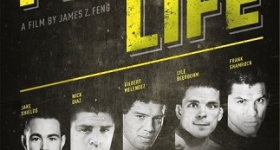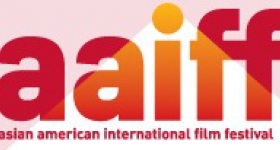STEVEN OKAZAKI quietly but intensely tells the story of Sakue Shimohira, a victim he interviewed for his new film, White Light/Black Rain.
Shimohira was 10 years old and living in Nagasaki when the atomic bomb fell. "There's a remarkable moment when she describes looking for her mother [right after the bombings] and finds a completely blackened body. The body is unidentifiable except for a gold tooth. She reaches out and touches her mother, and [the body] disintegrates into ashes."
After the deaths of her mother and sister, a distraught Shimohira decides to kill herself. Just before stepping in front of a rushing train, however, she stands aside. "She said it took just as much courage to live as to die."
Shimohira never told this story on film before, and she almost never got a chance. But thanks to documentary filmmaker Okazaki, who's brought stymied voices to the big screen throughout his Oscar-winning career, hers and many more untold stories from Hiroshima and Nagasaki will soon be seen in the United States and Japan.
Profound, punch-in-the-gut moments are Okazaki's specialty.
While Asian American narrative films may get more hype, Asian American documentary directors were among the first Asian Americans to make motion pictures in the 1970s and have long established themselves in the field. Their films not only achieved critical success, but works such as Who Killed Vincent Chin (1987), The Fall of the !-hotel (1983) and Sa-I-Gu (1993) were also catalysts in Asian American movements.
The passion to make films that give voice to the marginalized has driven Okazaki's work, which includes Unfinished Business (1986), an Oscar-nominated film on Japanese American internment; Troubled Paradise (1992), on the struggles of Native Hawaiians and Rehab (2005), about five young drug addicts.
While a number of films have been made about the atomic bombings, surprisingly few, if any, have focused strictly on survivors, Okazaki said while attending the White Light/Black Rain premiere at the Sundance Film Festival.
"There are lots of films in which other people speak for Hiroshima and Nagasaki survivors," he said.
Dispensing with historians, Okazaki lets the victims tell the story themselves. He met hundreds of them doing research for the film; 14 made it into the final cut.
Politics on both sides of the Pacific Ocean made the film difficult for Okazaki to make. Ten years ago he could not get the funding or the creative control he wanted, he said.
"I just gave up. It seemed the typical places for funding were not interested because the subject of Hiroshima and Nagasaki is still a really political subject. Japan likes the story told one way. Americans like it told another way. Neither is interested in hearing the real stories."
In the United States, the debate over "necessity" in the monumental decision to drop the bombs has never ended. In Japan, memory of the Japanese military and its victims strikes a powerful nerve, as demonstrated in the ongoing controversy over women forced to become sex workers for the Japanese military during World War II in Korea and elsewhere.
Recently, however, HBO suddenly and unexpectedly asked Okazaki to do the exact full-length film he wanted. With that stroke of good fortune, the film is now expected to air on HBO in August, around the anniversary of the bombings, and could be theatrically released in Japan, as well.
Okazaki prides himself on making films on a diverse range of topics. But getting a theatrical release in Japan-and breaking some cultural and political taboos in the process-would be a thrill for a director who has already received major acclaim in the United States.
The feedback has already been positive. Okazaki showed the film to a Japanese distributor, and "his first words were 'I apologize; no one in Japan has made this film. It took an American to make it."









Comments